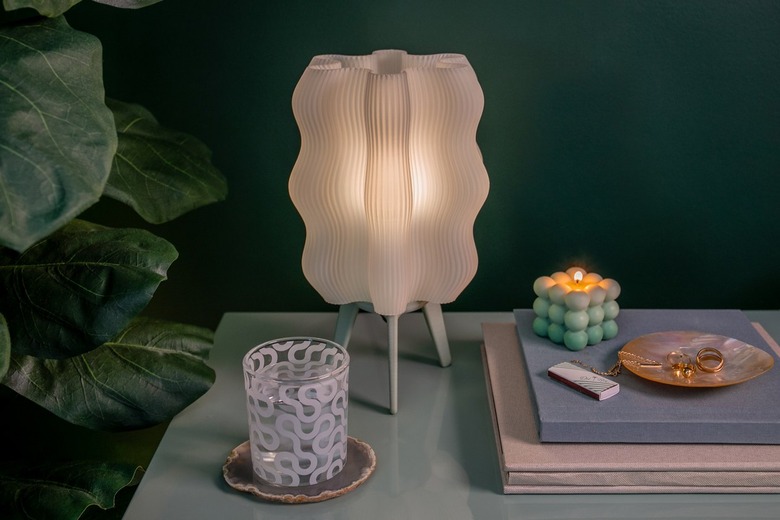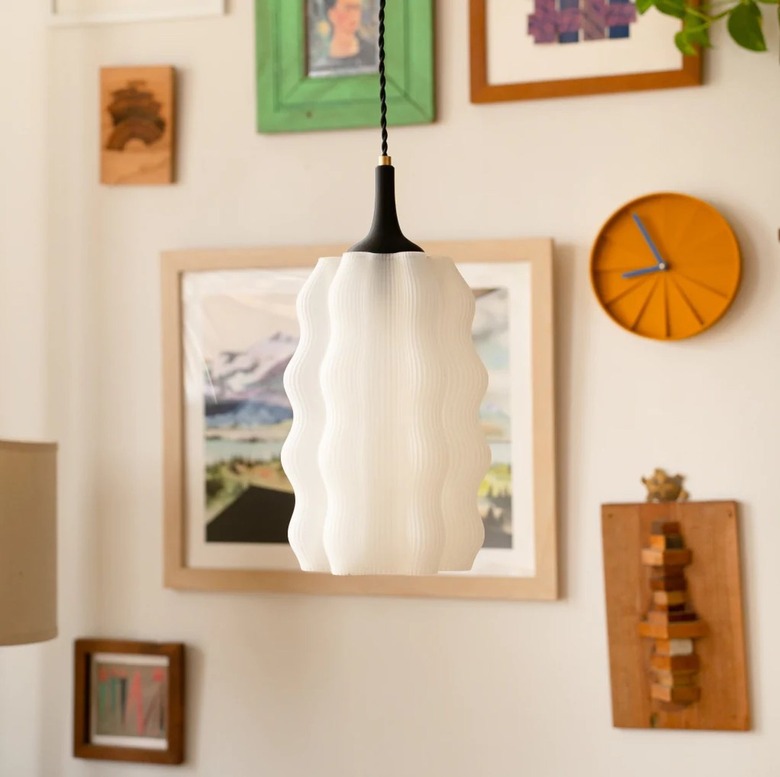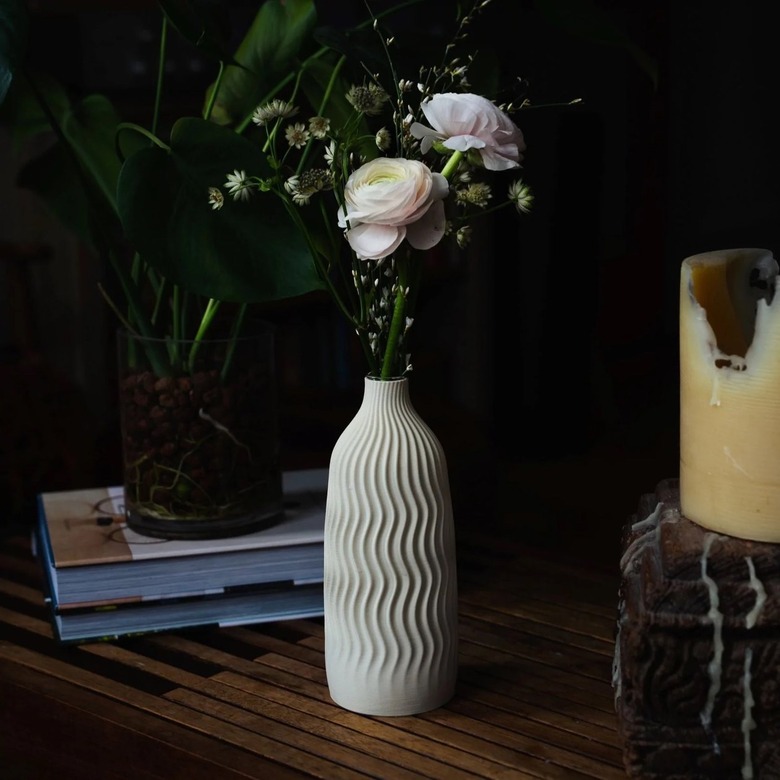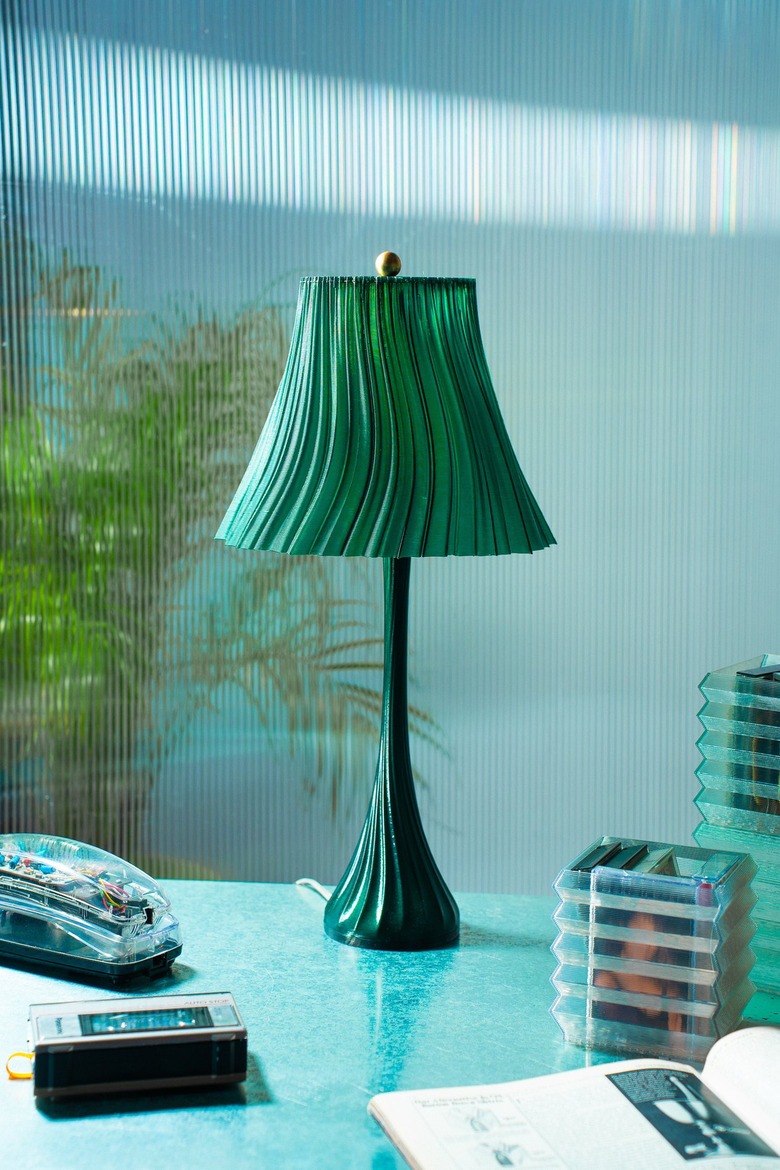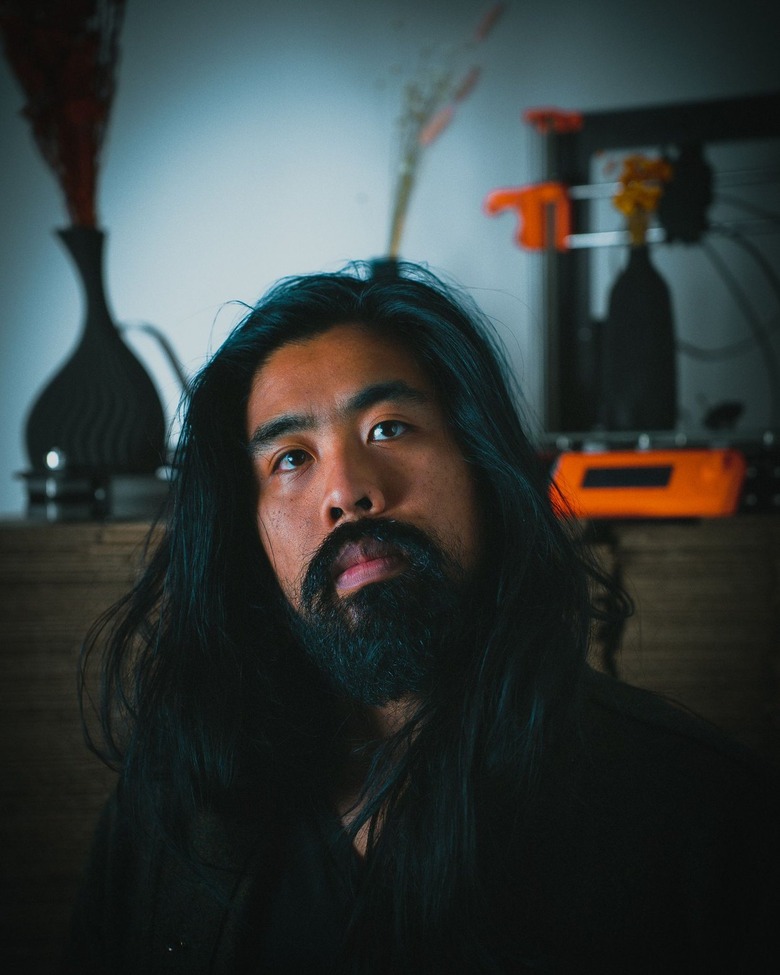How That One 3D-Printed Wavy Lamp Took Social Media By Storm
"If it ain't broke, don't fix it," they say. And if it is broken? Well, designer Sean Kim might go one step further than just fixing it.
When Kim's Noguchi lamp had a torn shade, he decided to get creative with the fix — no patching involved. Since the rest of the lamp still worked, he opted to design a new lampshade with his 3D printer.
It was the beginning of the pandemic, and Kim was working on his master's degree in industrial design at Pratt University in Brooklyn. After feeling positive about the end result of his Noguchi lamp alteration, Kim aimed to produce an entire lamp from scratch with the help of his 3D printer. That product would become the Wavy Lamp, the most popular product sold by Wooj, Kim's design studio. Wooj is actually a riff on his Korean name, Woojin, and it quickly became an Instagram sensation.
"I posted [the lamp] online, on Instagram. I was seeing if anyone who I knew wanted to buy one, and I think five of my friends bought one," Kim tells Hunker. "Then I was like, 'Cool, is this real? Maybe it's real.' So I put up some Instagram ads and then a couple of people bought them, then a couple of influencers, and then it took off. We had a bunch of orders."
At the time, Kim was printing his lamps out of his closet. But as the number of orders grew, he was able to acquire a studio space in Brooklyn, expanding from one printer and a one-person job to six printers and seven staff members.
Kim's interest in 3D printing began long before he set out to study design, back when he was studying psychology as an undergraduate. "I had seen an example of a 3D-printed thing and it really resonated with me. Here's a machine that can turn an idea into reality," says Kim. "As someone who's interested in design, but who's not in the design world, it made design seem really accessible."
But for years, 3D printing remained only a hobby. In fact, Kim spent four years as a computer programmer before deciding to enroll at Pratt. "Part of the reason I went to grad school was to think about manufacturing at large, in the context of how to create manufacturing abilities that are regional rather than part of the Global Trade Network, which we're seeing now is a lot more fragile than everyone expected," says Kim.
Because the entire Wooj operation is local and uses 3D printing, the creator is able to keep costs quite low, which is a key part of Wooj. "That was always kind of the objective for me — trying to make things reasonably priced. Something that I could actually purchase if I wanted!" says Kim. The crowd-favorite Wavy Lamp, for instance, starts at just $130. For a boutique operation, that is a very reasonable price.
As for what's next for Kim, he's pretty content to keep Wooj on the smaller side for now. "The goal is to keep growing to the bounds that feel reasonable to us as a small studio," says Kim. "I don't know that we're trying to be super, super huge, but certainly growing in terms of different product types, different categories of things."
Right now, Wooj produces lamps, vessels like cups and vases, and even a clock, but over Zoom, Kim shows us several prototypes of all kinds, from shelving brackets to storage cubes. The studio's most recent launch, however, is sticking to its lighting roots.
The Pleat Lamp, which debuted last month and retails for $180, has a traditional lamp silhouette, but there's a bit of trompe-l'œil (a trick of the eye) going on. The shade appears to be made of fabric, caught mid-spin, but it is, of course, completely solid.
The idea for the Pleat Lamp came about when Kim and his team were working with design software for the 3D printer. (Turns out that background in computer programming was pretty important!) "We were playing around with this fabric software, and then it was like, 'Okay, we have this fabric shape. Now what do we do with it? How do we make it into something useful?'" says Kim.
That's how his design process usually goes. It starts with the idea of an aesthetically pleasing form, and the function follows, but it's that primary focus on form that draws the customers in. "We have a design style that puts thoughtfulness in the objects themselves and adds a little bit of value on top of the pure function," says Kim.
